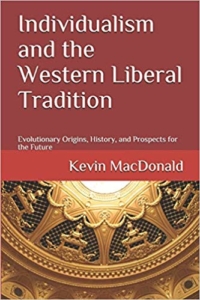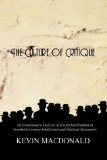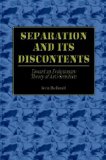The Triumph of the Political Class
Peter Oborne
Simon & Schuster, 2007; paperback: Pocket Books, 2008

Words and phrases often enter the political lexicon via the US media before crossing the Atlantic Ocean to the UK, and one such recent migrant is the “uniparty”. The Americans have been using it for some time, and the Right-of-center media in Britain are now cautiously trying it out. The idea, of course, is that the two-party system central to both US and UK politics is an optical illusion, and in fact the difference between Republicans and Democrats, or Conservatives and Labour, does not exist in any meaningful sense. If the British MSM read more and talked less, they would have realized that the British uniparty was discovered back in 2007 in a book entitled The Triumph of the Political Class, by lobby journalist Peter Oborne.
A lobby journalist is the equivalent to a member of the White House press pack, guaranteed access to the inner circles of government and thus worth the attention of the political observer in a way that plain op-ed writer is not. Many political hacks write about government with their faces pressed up against the window looking in; Oborne has been respected and even befriended by some of the most powerful people in British government. But the book was inspired by Oborne’s increasing disillusionment with the way in which the great political reforms made by the much-mocked Victorians were overridden as the twentieth century turned into a new millennium. What had been a system which prioritized public service over private acquisition had changed into a new political cadre in which “the most bitter rivalries at Westminster have involved factional conflicts within individual parties rather than collisions of ideology and belief”. This discovery, Oborne writes, “was very frightening indeed”.
Oborne begins with the architecture of the British political class, calling it “a manifestation of the state”, and locating its inception specifically with the arrival of Tony Blair as Prime Minister in 1997. Margaret Thatcher’s premiership, he writes, was the last time there was a genuine ideological difference between the two main parties. Whereas politicians once gained status in Parliament by virtue of their position in society, they now gain status in society directly relative to their position in Parliament, and there is increasingly a disconnect between politicians and the real world of employment, a world they find baffling. Britain had shifted to what Oborne calls “cartel politics”, an impregnable ideological fortress within whose walls both major parties co-exist.
Oborne makes no claim to having discovered the concept of a political class, citing the late nineteenth-century lawyer and social theorist Gaetano Mosca, whose Elementi di Scienza Politica was translated into English as The Ruling Class. It is notable that the book is “today viewed by some historians as a theoretical precursor of the fascist ideology”. This has now become a commonplace move with ideas that are getting too close to the truth: file under fascism.
Oborne sets the political class in its recent historical context by contrasting it with the British “Establishment”, a phrase coined by historian A. J. P. Taylor, and which Blair in particular used as a political tool by claiming it was outmoded and hidebound. His “big tent” politics gave the illusion that the days of the Eton-educated, old money, traditionalist ruling class were over, and that politics was about to descend from its class-bound Olympus to dwell among mortals. This was technocratic smooth talk, of course, but Blair’s people went to work on the idea of the Establishment with fine attention to detail.
One of Oborne’s key insights is that, in 2007, the techniques of the political class were still a work in progress. A complementary realization is that the new political class would not have the organic core of the old landed class, but would rather be put into the hands of PR gurus, spin doctors and focus groups. Media coverage had accelerated, and so the new breed required grooming in dress, speech, and lifestyle, in order to promote to the public a carefully tailored image.
This is not a simple requirement to act with decorum or integrity, as it once would have been, but rather a pre-programmed regimen whereby politicians are “outfitted” for the media, the synaptic link between the political class and the electorate. This extends to speech, and the famous “Queen’s English” (now once again the King’s English) once favored by the political class defers to so-called “Estuary English” (from the region known as the Thames Estuary) as a default speech pattern. Clothing becomes indistinguishable from that worn in the corporate management workplace. A politician’s private life, once off-limits to the media, is now used as a form of self-promotion, and “It is automatic for a member of the Political Class to exploit family and friendships in order to sell his political career”.
This is the positive PR veneer. The negative involves the attack on existing and once-respected standards of behavior. Politicians, it is stated ad nauseam, are “judged by higher standards than ordinary people”, implying that the plebs have lower standards, that “virtue only resides in the state, and that civil society is largely corrupt”. After citing Mary Wilson, wife of Labour Prime Minister Harold Wilson in the 1970s, who did not accept £33 for some published poetry, Oborne compares Tony Blair’s wife Cherie, claiming that the human-rights lawyer was exemplary of the new political junta: “She would have been a familiar part of the landscape in the mid-eighteenth century, when the governing class made little secret that it sought public office as a vehicle for pursuing self-interest”.
Her outrageous abuse of position included a speaking engagement for a cancer charity dinner for which her fee exceeded the amount raised at the event, a personal phone call to a director of Manchester United football club to negotiate a discount for a team shirt featuring David Beckham’s number, and an invitation from a Melbourne designer store to take a few things as a gesture of goodwill. She walked out of the store with seventy items. These seem like trifling examples of shameless behavior, but they are indicative of a new code of office in which personal enrichment outpaces public duty.
Her husband’s talent was to mask the project to insulate the political class while making it look as though a much-needed revolution would return politics to the people. Blair pledged “To liberate Britain from the old class divisions, old structures, old prejudices, old ways of working”.
Compare Mao Xidong’s list of revolutionary aims from China’s “Red August” in 1966, just after the Cultural Revolution began. Mao’s mission was to sweep away the “four olds”: Old customs, old culture, old habits, old ideas. This rejection of the outmoded political past was cast as modernization, the shibboleth of the political class.
The sweeping away of the past was not, however, to return to the values of public service, but intended instead to remold the British constitution to answer the needs of this new style of politicking, and that meant undermining the major institutions of government. The Blair government systematically attacked the civil service, the judiciary, the intelligence services and the very power of Parliament itself. The idea of a collective executive loyal to the crown was anathema to Blair. Everything came down from him and his inner circle.
Oborne quotes fellow journalist Hugo Young in defining the British Civil Service as a body which “represents and personifies the seamless integrity of past, present and future government rolled indistinguishably into one”. This is precisely the tradition Blair’s government sought to undermine and, in Oborne’s phrase, “emasculate”. With Blair’s huge mandate, this led immediately to “a sustained and brutal attack on the influence of permanent officials”. The role of Secretary to the Cabinet sounds menial but is in fact one of the most important roles in the Civil Service, and Oborne shows Blair reducing the holder of the post to “a debased and peripheral figure”.
There was nothing slow about Blair’s march through the institutions of government. The Foreign Office, once one of the most respected government departments, found that its very integrity made it a target. The Blairs were notorious for holidaying at the expense of others, and took full advantage: “Very soon after entering Downing Street the Blair family started to see the foreign service, with its access to large houses in desirable overseas locations, as a potential travel agent”.
British intelligence saw the rise of the Secret Intelligence Service, known as MI6. Intelligence increasingly became a political tool, and Oborne notes its rise as coincident with that of the new political class. The intelligence gathered before the contentious entry of Britain into the Iraq War both served that class, and led ultimately to the notorious “sexed-up dossier” which many have found misleading at best, and designed solely to bring the UK into the conflict at the behest of the Americans at worst. This shake-up of government also saw MI6 as increasingly less concerned with national security threats and more dedicated to intruding into the lives of ordinary people, which leads Oborne on to discuss Labour’s manipulation of the law of the land.
The analysis of the judiciary by Blair’s Home Secretary, David Blunkett, “was extremely close to the Marxist proposition that the protections offered by the courts are simply ‘bourgeois freedoms’.” With a sustained offensive against Britain’s famous habeas corpus law, aimed at preventing illegal detention in the absence of evidence, the new breed of politicians struck back at ancient history and the Magna Carta. It was a short step to taking on one of the most ancient and venerable of British institutions; the monarchy.
The co-opting of the funeral of Lady Diana Spencer by Tony Blair, and his sentimental catchphrase, “the people’s princess”, have become notorious as a symbol of Blair’s wish to have a higher public profile than the royal family. The most telling example of Labour’s contempt for the monarchy came from Blair’s infamous press enforcer, Alastair Campbell, largely responsible for the Iraq dossier noted above, and to all intents and purposes a member of Blair’s Cabinet. In Jordan for the funeral of King Hussein, Prince Charles came to meet Blair and Campbell in a makeshift office with only one chair. Blair shook hands with the then Prince of Wales, while Campbell “was sitting slumped in his chair making calls on his mobile [and] simply ignored the Prince”.
As an experienced journalist, one might expect Oborne to be strong on the vital role of the media, and its effective capture, in the formation of the political class. This new executive, he writes “sought to give an almost constitutional role to the British media by building it up as an alternative to existing state institutions”. The result of this replacement is that “at its simplest, journalists become instruments of government”. Journalistic aims are altered, and not subtly, from being supposedly impartial reportage to forming a quasi-constitutional department of government devoted to myth-building and the maintenance of the Blairite project. The Blair government oversaw the creation of the “narrative” we hear so much about, a word which has its roots in story-telling to the tribe.
An added function of media is to act both as a client of government, and to be cast as hostile, the enemies of progress and modernization. Blair divined early on that enemies of his government needed to be put into the public consciousness even if they didn’t actually exist, and despite Rupert Murdoch being effectively a key member of Blair’s cabinet, the line from government was implicitly that the state was fighting with monsters who would oppose good and righteous governance. The BBC — who began to be referred to as “the state broadcaster” around this time — were the mainstay of the operation:
“The distinction between an aggressive, illegitimate press and a well-meaning government has formed the template of a great deal of BBC reporting over the last decade. It became automatic for BBC reporters and commentators to portray any government crisis as a contest between press and government, just as Campbell had suggested”.
I saw Alastair Campbell once on a street in London. We looked at each other for several seconds, and he was obviously aware that I knew who he was. I wouldn’t say the look he gave me portrayed the face of evil, just the face of ambitious malevolence.
The Iraq War was the pinnacle of Labour’s media-generated deception program. The government effectively lied both to the public and to the House of Commons over Saddam’s supposed weapons of mass destruction, his willingness to use banned chemical weapons on British troops, and the likely death toll for allied forces. This was, in the end, far outstripped by hecatombs of dead Iraqis. It is a strongly held opinion on both sides of the British political divide that both Blair and Campbell should have been tried for war crimes.
The final masterstroke of the Blair government’s total occupation of the political estates was its use of techniques of mass formation honed in the world of corporate advertising and marketing. Blair copied and adopted Bill Clinton and Karl Rove’s technique of triangulation, whereby advanced software could discount blocs of votes and concentrate on a relatively small number of undecided voters in swing states. Britain has a similar balloting system to America’s electoral college, and so the persuasiveness of any policy message to the people becomes instead a jig-saw puzzle with key pieces which must be privileged when campaigning: “The Political Class negotiates with the voters through television and searches out their opinions through mechanisms such as focus groups and techniques based on market research or borrowed from the advertising industry”.
This “manipulative populism” has been in place ever since, and Oborne’s book shows it under construction, unclear at the time but now a familiar apparatus.
Oborne wrote, in 2007, that the political class had won. The theatrical element to politics, increasingly absorbed from the US, had become the whole show. Oborne relates a story of his visit to a Tony Blair walkabout in an English town. Blair was filmed talking and smiling with all his charm and empathy on show, the good people delighted to bask in the presence of Dear Leader. The only problem is that all the “members of the public” had been hired and paid by the Labour Party. When security realized who Oborne was, they tried to keep him away from the press event. When he finally got in, they tried to throw him out. He was a bad courtier.
Oborne’s epilogue was written as Gordon Brown had recently taken over from Tony Blair as Prime Minister, and despite some cosmetic pledges to correct some of the constitutional excesses of the Blair era, such as announcing government policy in the House of Commons and not via the media, Oborne notes that he only typified the political class. Oborne’s final sentence is in the hope that David Cameron would be “capable of leading an insurgency against the Political Class — or whether he will… become no more than another manifestation of its alluring, corrupt and anti-democratic methodology”. Britain got its answer, and now that the political class is merging fully with the global elites, we have just had the bizarre experience of a nominally Conservative party spending 14 years setting up a far more socialist Labour regime which is only just beginning to show what is to come.
We see the results of the changeover Oborne describes today in Britain. In 2007, “The values of the Political Class… [were] still in the process of formation”.
Now, another chapter has been added to the playbook, as the British uniparty — which recently passed the baton between its two main runners — is happy to allow criticism of government incompetence be openly pronounced. But Government incompetence is a psy-op. The British uniparty is in fact highly competent, just not in an area of expertise which serves anyone else but themselves. The course of Britain towards ruin is not sloppy governance but grand design, part Bezmenov, part Samuel T. Francis’s anarcho-tyranny. The British political class are not only competent, they have been honing that competency over the last 30 years and are, to put it simply, becoming very good at being very bad. This class has done what they have always said they wanted to do, which is to reintroduce morality into politics. Just not, as a child might say, in a nice way. Oborne’s prediction for the future of Britain, made 17 years ago in this most important of British political books, has shown itself to be prescient: “This estrangement between a tiny governing elite and mainstream British society is one of the overwhelming themes of our age, and it will only get more desperate, and more dangerous”.



 Brujeria’s message in 2016 for Trump and his supporters: you deserve violent death
Brujeria’s message in 2016 for Trump and his supporters: you deserve violent death Blonde Female Gollum: The twisted features of malevolent leftist Marina Hyde (main image
Blonde Female Gollum: The twisted features of malevolent leftist Marina Hyde (main image  Ebun Joseph
Ebun Joseph  Alice Feldman
Alice Feldman Laura Weinstein
Laura Weinstein Ronit Lentin
Ronit Lentin Katrina Goldstone
Katrina Goldstone 






 Hideously White: Labour’s lying propaganda video
Hideously White: Labour’s lying propaganda video Now you see it, now you don’t: Starmer and his disappearing poppy (image
Now you see it, now you don’t: Starmer and his disappearing poppy (image  Fatuous and vacuous: by “Change,” Starmer means “More of the Same”
Fatuous and vacuous: by “Change,” Starmer means “More of the Same”


